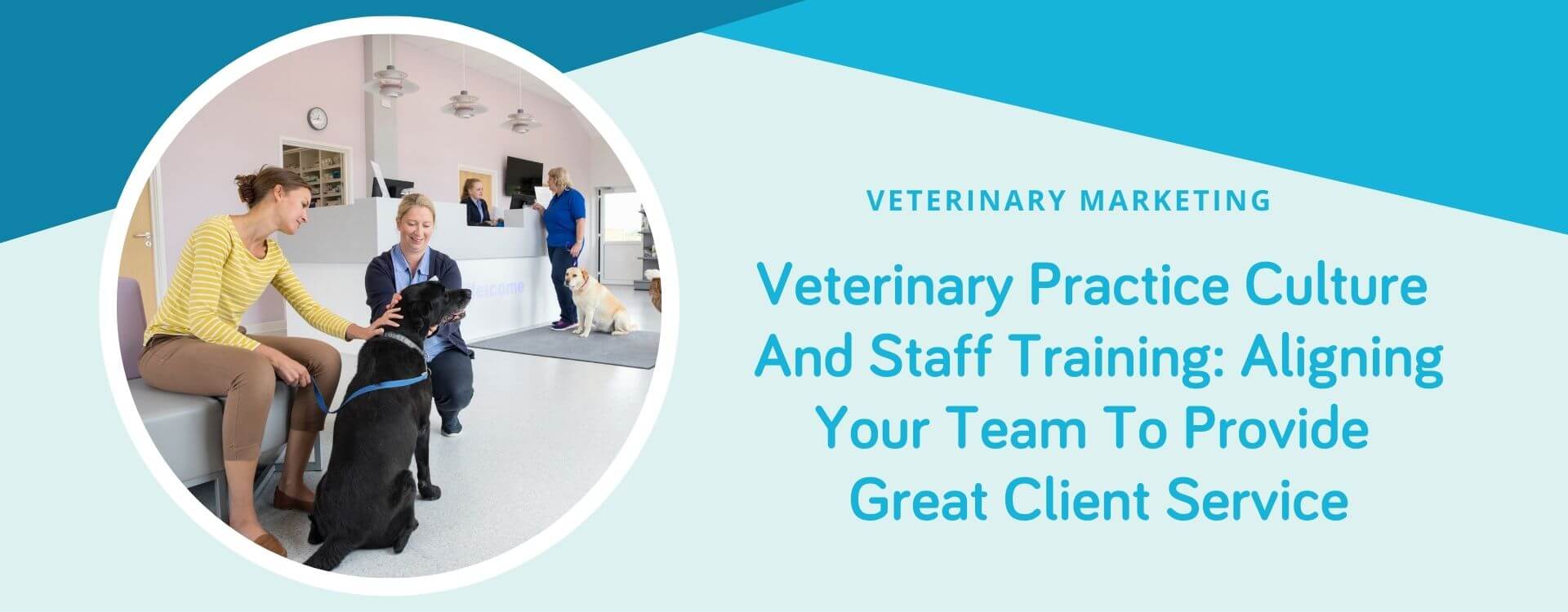Veterinary Practice Culture And Staff Training: Aligning Your Team To Provide Great Client Service
A Note About This Blog Post From Our Team at GeniusVets! This post was written by one of our founders, Dr. Michele Drake—Founder of The Drake Center For Veterinary Care in Encinitas, CA. She is one of the highest-performing practice owners in the country, but that could perhaps make you skeptical. Why wouldn't Dr. Drake want to keep her trade secrets close to the vest? She has always been passionate about sharing the secrets to her success with other practice owners because she truly believes that each one of you can elevate one another and the veterinary field in general. So read on and enjoy her tips on establishing a healthy practice culture and getting employees and new hires in alignment!
...
Local pet owners can visit any practice for veterinary services, but they should choose yours for a very important reason: your staff. Every practice faces the same challenges of busy schedules, frustrating cases, and substantial to-do lists. But it’s how you and your employees handle those stresses that sets your clinic apart. A well-trained staff provides the same stellar client service on those crazy days as they do on the precious few easy-going days, and clients will certainly notice.
Consistent and continuous training will help all of your employees keep fine-tuning those client service skills and reinforce the unique culture of your business. Prioritize these efforts to make every client and patient feel valued and appreciated during their appointments, and you’ll see this pay off in strong, lasting client bonds. Let’s look at some veterinary staff training elements that hold true across all practice cultures:
Starting with the Right New Hires
Staffing, of course, begins with applications and the interview process. When the practice owner and practice manager align with your culture, you’ll agree to seek out veterinarians, receptionists, technicians, assistants, kennel attendants, and groomers who fit right into that culture. That initial fit will set you up for success, bringing in staffers who share your philosophies about interacting with people. Primarily considering work experience and skill mastery will help you fill empty positions. However, communication styles and career motivations are just as important to factor into hiring decisions to help you ensure that everyone on the team will work together for the best outcome of the practice.
The Practice Owner’s Role in Onboarding New Staff Members

Customer service is the responsibility of every person in the hospital, from the seasoned practice owner to the newly-hired assistant. To set this tone immediately, the practice owner should sit with any new staff member, regardless of their place in the practice. This should be an initial welcoming training session, during which the new hire can learn about the history of the practice, as well as the mission, culture, and values. This is NOT a “let’s establish who is boss” conversation; instead, it is an early opportunity for the new employee to understand the origin and guiding principles of the practice - from the person who lays the groundwork. You’re establishing the team connections, making it clear that everyone has a role in working toward the business’s purpose and mission.
Training and Mentorship for New Employees
Thorough training is challenging for any small business. While there are outside resources available for general skills training, most of any in-depth program needs to be built by your own leadership. And you certainly need an organized training manual, but you’ll need to make space to update that manual whenever industry or practice developments warrant a change. Putting policies in writing is what truly makes them “official.”
In addition to self-paced or independent learning, mentorship is valuable in communicating daily duties and overall culture. Identify your strongest trainers so that new employees can shadow them for four to six weeks before receiving their shifts on your schedule. The mentor will model appropriate behavior during client visits, demonstrating the language, recommendations, and standards of practice that should be common to everyone on staff. This person will also answer questions, offer clarifications, and help the new hire practice in role-play scenarios.

It is vital to follow up to see how that guidance and mentorship developed. Solicit feedback from the new employee’s team members without asking for gossip. Have they noticed that this person’s client interactions are consistent with your culture? Also, use your call tracking system to listen to recorded phone calls. What messaging is this person delivering to your clients? Compare a “slow” day with a busy day: does this person take a calm approach to client interactions, even during stressful times? Assess whether your new trainee’s behavior builds client confidence during appointments and interactions, leading to repeat visits and strong client bonding. Again, this is vital to the health and growth of your veterinary business.
Client Service Training is not Just for New Hires
The practice owner must always make it clear that everyone has a part in creating great client experiences. Think of customer service as you would any other continuing education. It is just that: education that continues. Regular staff meetings are generally the perfect setting because you can likely devote 30 minutes each month to this, with your entire staff in attendance.
Specific topics will depend on your clinic and your experiences. Some tactics to consider:
- A customer experience that didn’t go well - Brainstorm some “alternate endings,” considering different ways to handle a situation like this, leading to an improved outcome
- A customer experience that went just fine - Even if the patient and client were not unhappy, could you say that they were truly “wowed”? What could be some next steps to turn a satisfied client into an ecstatic client? How could you inspire this pet owner to share a positive review or refer a friend to you?
- The patient’s perspective - Consider what pets experience coming through your hospital, from sights to smells, to sounds, from treatment to discharge.

- Telephone etiquette - Roleplay phone calls from all sorts of local pet owners. How should you react to an emergency call? To a new kitten owner? To the impatient pet owner seeking a second opinion?
- Your online presence - Is your marketing team receiving the support and content contributions they need? Are you connecting with pet owners, supporting their customer journey toward making appointments with you?
Whether online or in-person, always evaluate your client interactions to see how you can better serve them. Inspire them to make that initial appointment with you, and then inspire them to keep coming back!
Don’t Let Poor Culture Fits Interfere with Great Customer Service
If someone does not align well with your culture, you need to correct that immediately. This includes any staff member, even a doctor. If someone is not aligned with your culture, leadership should meet with them to assess why this is the case. Is there a misunderstanding? Was there a gap in training? Work together to get on the same page.
Unfortunately, there are instances when a bad culture fit cannot be overcome. Perhaps once this person got to know your company culture well, they found that it simply doesn’t mesh with their natural way of delivering care and client service. Maybe they just don’t want to work within your practice’s mission and vision. In these cases, your leadership should decide to let that staff member go. If you leave someone on your team who runs counter to your client service delivery standards, you run the risk of confusing your clientele. They won’t necessarily know what to expect at any given visit, and they’ll be less likely to return for repeat visits. This, then, demoralizes the rest of your team and devalues any messaging you’ve worked to establish in your practice.
No matter your title, if you’re on a veterinary practice team, you play a role in client service. All employees are responsible for knowing the intricacies of their roles, but the practice owner will set the overall standards for culture and mission. Without those general standards, and without each person knowing exactly where to fit, customer service will suffer. But with a strong training program in place, clients will reap the benefits of your team’s solidarity and consistency. And local pet owners can tell the difference between an unaligned staff and a unified team!

To learn more about how to steer your team with consistent messaging, a strong brand, and established foundational culture, sign up for Dr. Drake's highly esteemed Culture Workshop. Also, schedule a FREE Veterinary Marketing Healh Exam to learn expert hiring strategies and how to improve your bottom line!

